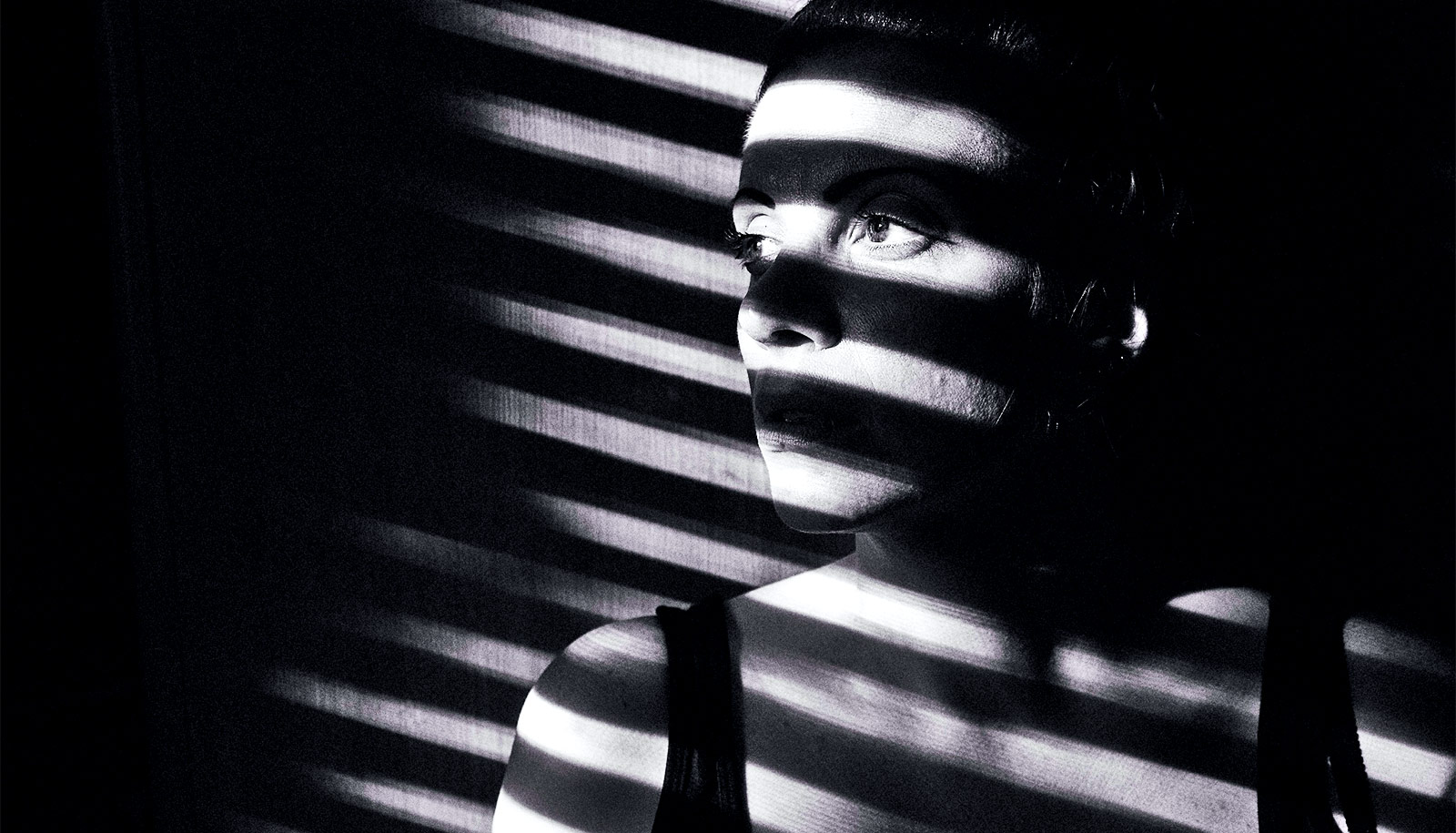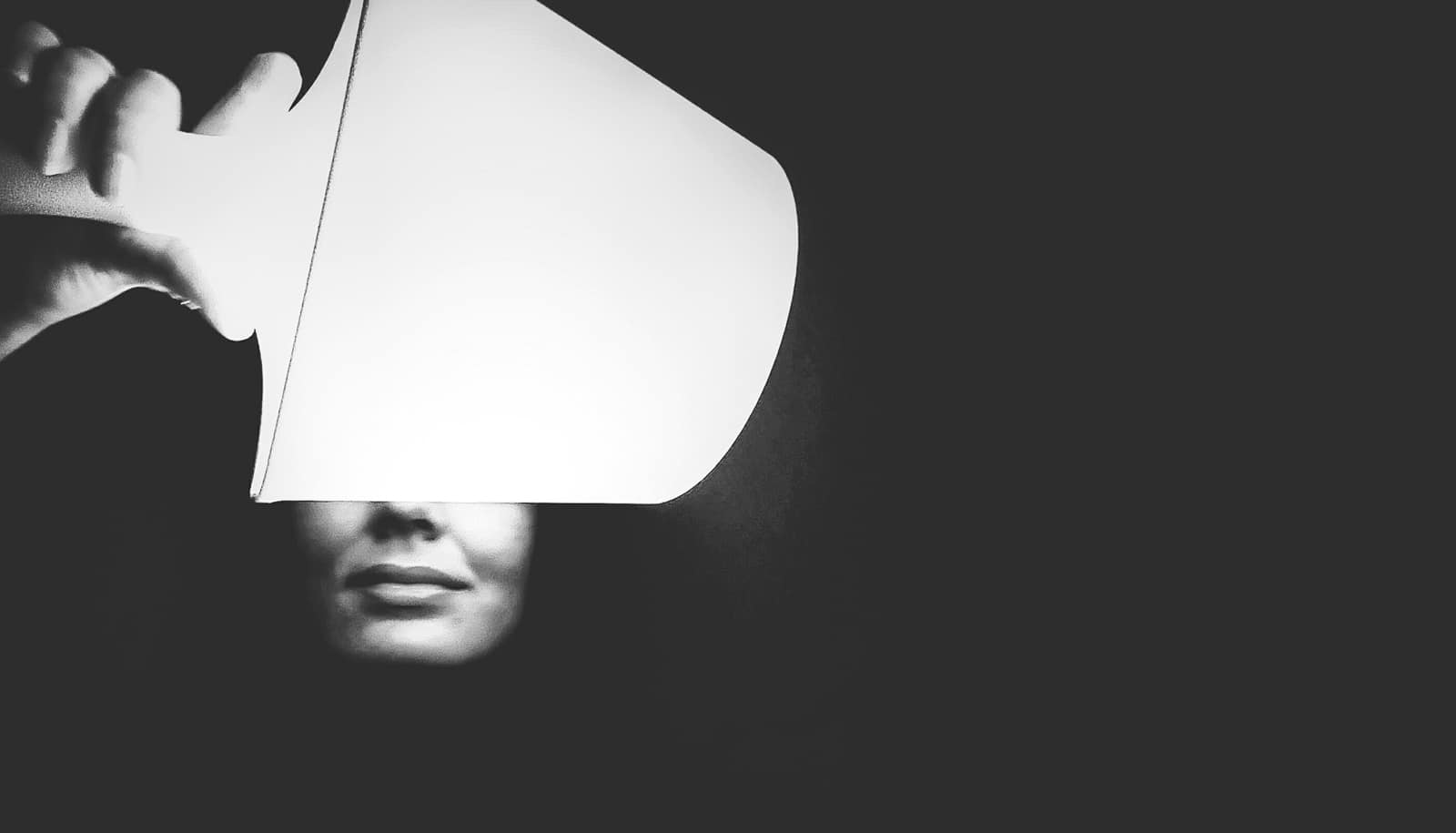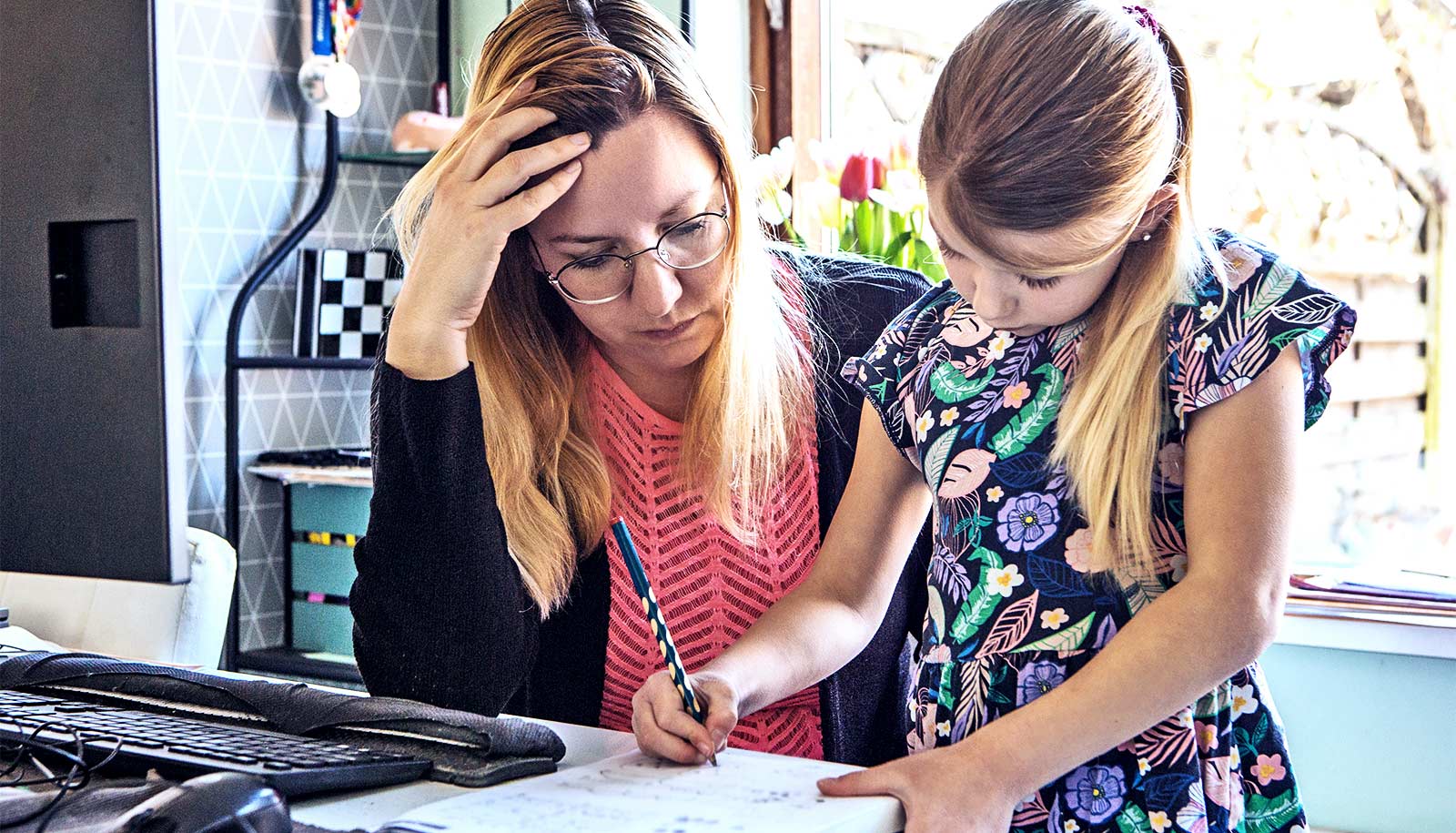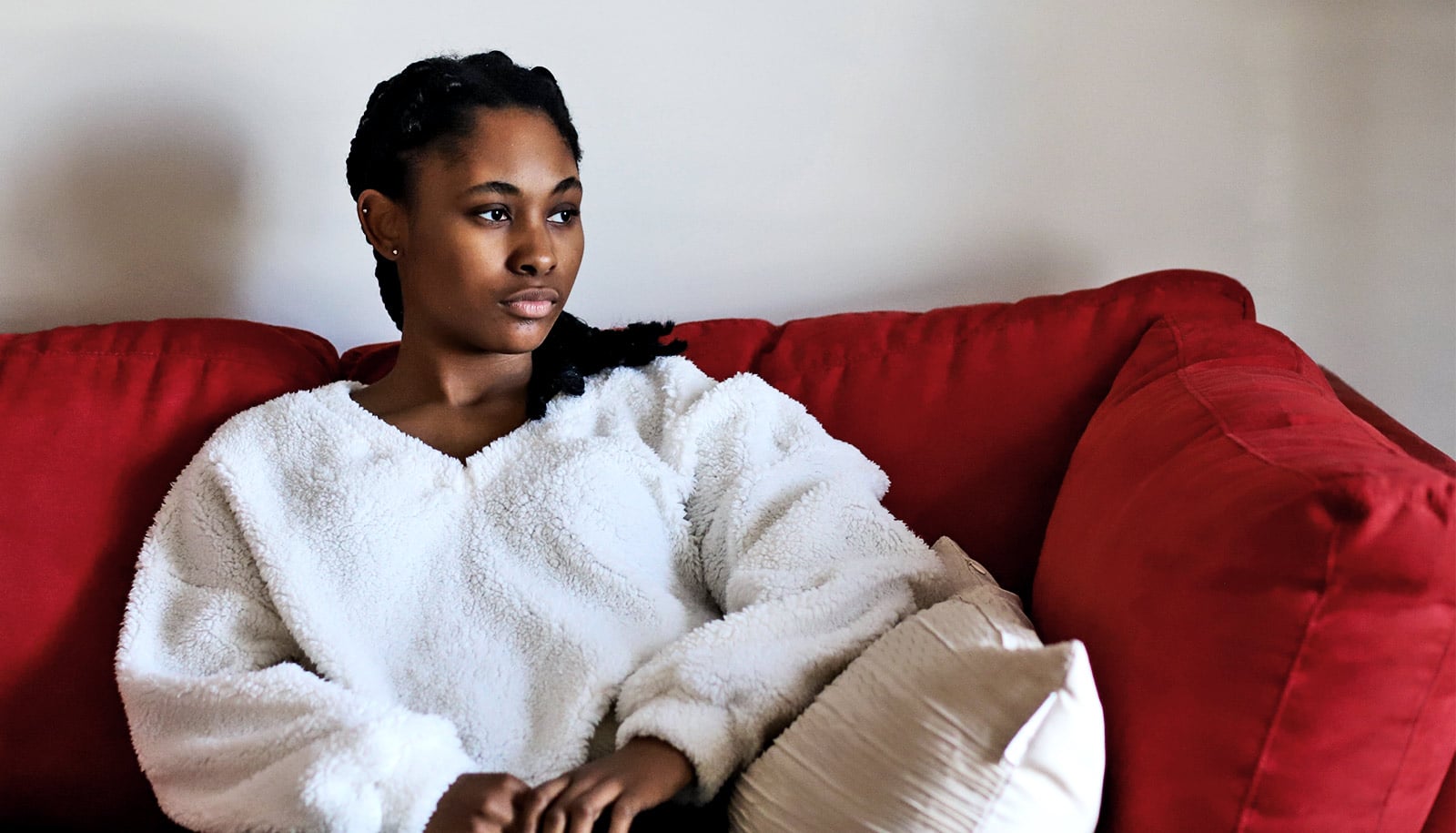The COVID-19 pandemic could make seasonal affective disorder even tougher to deal with for many people, but there are ways to make yourself feel better, Hanne Hoffman says.
Hoffmann, an assistant professor in the College of Agriculture and Natural Resources at Michigan State University, and her colleagues in the Hoffmann Lab, study how light regulates our physiology, affects our overall well-being and mood, and induces changes in brain function.
“This is an unusual year with the COVID-19 pandemic causing increased isolation, more time indoors, and increased stress. These are all risk factors for depression and SAD,” she says.
As winter approaches, Hoffmann answers questions about light and seasonal affective disorder as well as how the pandemic affects people with SAD:
What is SAD?
Seasonal affective disorder is a type of depression that is related to changes in seasons. It usually begins with less hours of sunlight in the fall and eases in spring when days gets longer. Interestingly, a small proportion of people do experience SAD in the summer. Due to the seasonality of SAD, it is commonly known as seasonal depression. Although anyone can get SAD, women experience it four times more frequently than men. At this point, it’s unclear why women are more at risk for SAD than men. Since the disorder is caused by changes in day length, the further away from the equator you live, the higher the risk of experiencing it.
How many people have it?
Studies indicate that as many as 20% to 40% of people living at approximately the same latitude as Michigan experience some degree of SAD in the winter. However, this number could easily be reduced through lifestyle adaptations, including spending more time outside and using light therapy.
What does lack of light do to your body and how does it affect health?
Light matters because it boosts your mood and energy. To regulate your mood and physiology, light-sensing cells send light information to the brain through the optic nerve in your eye. From here, neurons in the brain further relay the light information to regulate mood and hormone release, changing physiological functions depending on the season of the year. The impact on physiological changes in response to light is more pronounced when exposed to blue and green light wavelengths than red light wavelengths. The exact mechanisms happening in the brain for light to regulate mood is poorly understood, but evidence supports that light can regulate the mood-enhancing neurotransmitter serotonin as well as the sleep-promoting hormone melatonin.
In the summer, when most people get a lot of natural light, this promotes changes in the body allowing an increased sense of well-being, more energy and good mood. In the fall, when most people spend less time outside, combined with days with less hours of sunlight, many do not get enough natural light to maintain the “feeling happy” brain signals, and start to feel sad. The onset of SAD is progressive and is therefore often overlooked.
Common signs of SAD include lack of energy, reduced motivation, trouble concentrating, and feeling down as well as being grumpy, moody, or anxious. You might eat more and gain weight. Your sleep quality often is reduced, and you might sleep more but still feel tired when you get up. To be appropriately diagnosed, you should see your primary care physician.
Will it be harder to deal with SAD this winter?
This is an unusual year with the COVID-19 pandemic causing increased isolation, more time indoors, and increased stress. These are all risk factors for depression and SAD, which is supported by recent research evaluating depression in the summer of 2020 and found an increase in depression by more than three times. Due to the continued changes in lifestyle, increased work, family stressors, and reduced social interactions, we can expect to see a significant increase in SAD this winter.
Does light therapy really work?
Yes, the good news is that light therapy works for almost everyone to prevent or reverse SAD.
The general rule is to imitate the natural light cycle of the outdoors: bright (blue rich) light during the day and dimmer (with little to no blue light, and more red light) in the evening. Today, there are many affordable light boxes, also known as SAD lamps, which can be purchased and used to help prevent the disorder.
To reverse SAD, start light treatment as soon as possible. The benefit of light treatment will take days to weeks to happen, so be patient. Here’s how to use a light box:
- Use daily if possible, but at least five days per week.
- Use early after waking, preferably between 7 and 8 AM or during the middle of the day. These are the times of day when the body is the most sensitive to the mood-enhancing properties of light. Most importantly, just get some light.
- You do not need to use the light box at the same time of day every day.
- Avoid extensive use in the late afternoon, and do not use it in the evening or after sunset. In the evening, you want to avoid bright light to promote melatonin release, which will help you sleep.
- Use the lightbox at least one to one and a half hours per day. This can be broken down into two or three sittings. You can use it less, 30 to 40 minutes, if you use it in the morning right after waking up.
Do you have recommendations on what to look for in a light box?
These are some general recommendations, and many different light boxes exist. The important criteria is bright intensity (light brightness is measured in lux). On average, a light box with the below criteria cost approximately $60 to $140.
- Use a light box with 10,000 lux at 12 inches or more from your face.
- Some of the more expensive light box models, which cost more than $150, will allow you to be up to two feet away and still get the recommended amount of light.
- Make sure the light has a UV filter to avoid the risk of retinal damage to the eyes.
- Do not look straight into the light box. For example, place it at an angle next to your computer screen or on the table next to where you are reading a book. If you love cooking, hang it on the wall in the part of the kitchen where you spend the most time.
In addition to light therapy, is there anything else we can do to prevent or reduce SAD symptoms?
Yes, there are other things to combine with light therapy that will help.
- Consider “talk” therapy. Twice a week talk therapy sessions with a friend have been shown to be effective at reducing the symptoms of SAD, and it works well in combination with light therapy.
- Consider antidepressants. If you suspect you have SAD or are at risk of developing SAD, see your physician, who may prescribe antidepressants. Antidepressants are, in most cases, effective at treating SAD.
- Take vitamin D. Vitamin D deficiency is very common and more pronounced in the winter due to reduced natural sunlight, and studies indicate it can improve depression. Before starting supplements, it’s best to have your Vitamin D levels evaluated by your primary care physician to help determine the best dosage.
- Get outside regularly during the day. Natural light is a great prevention and treatment strategy for SAD.
- Try to reduce your stress level in the afternoon because stress and too much light will impair your sleep.
- Increasing your sleep quality by sleeping through the night and getting at least seven and a half hours, which is beneficial for your overall mental and physical well-being.
Source: Michigan State University



